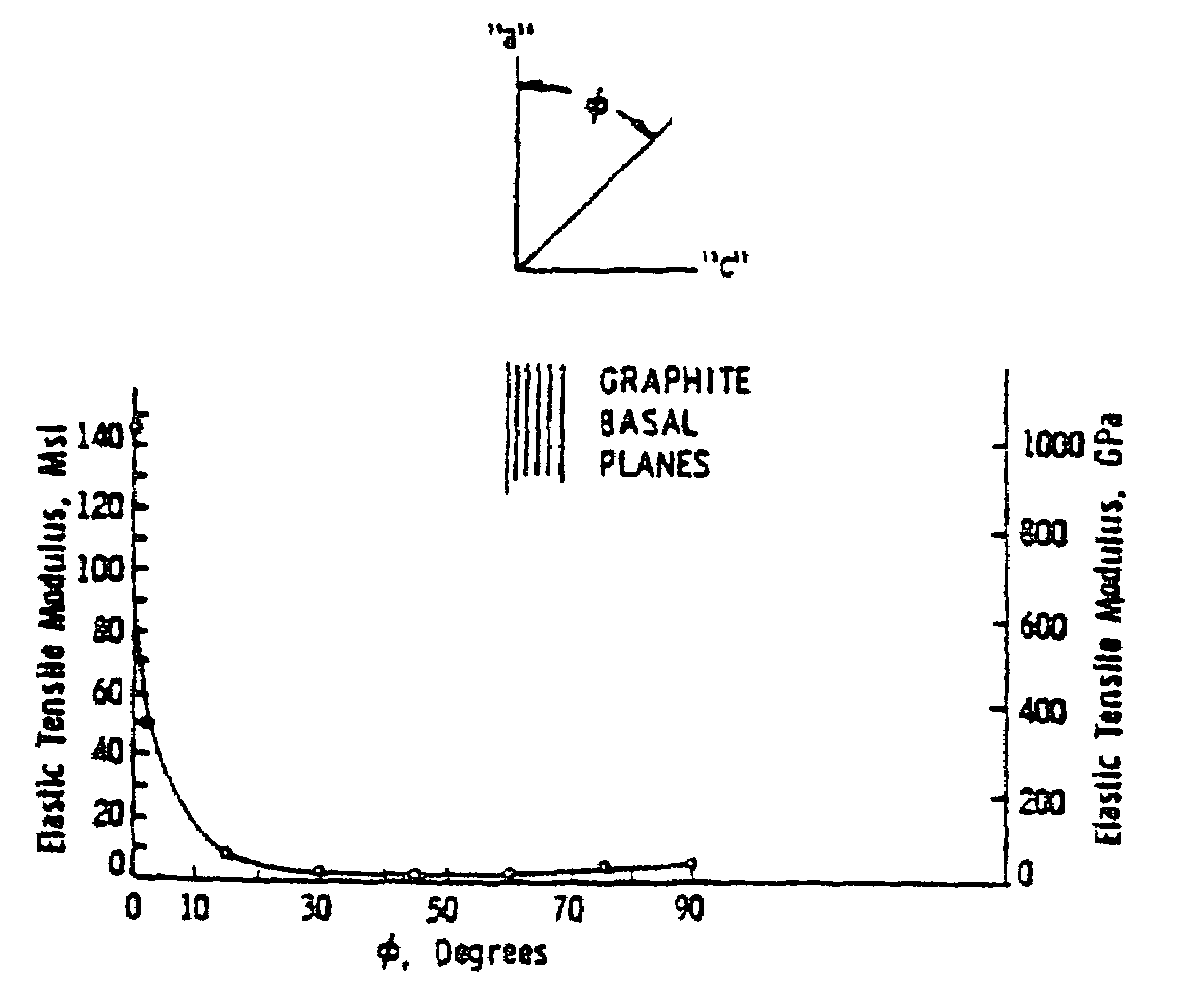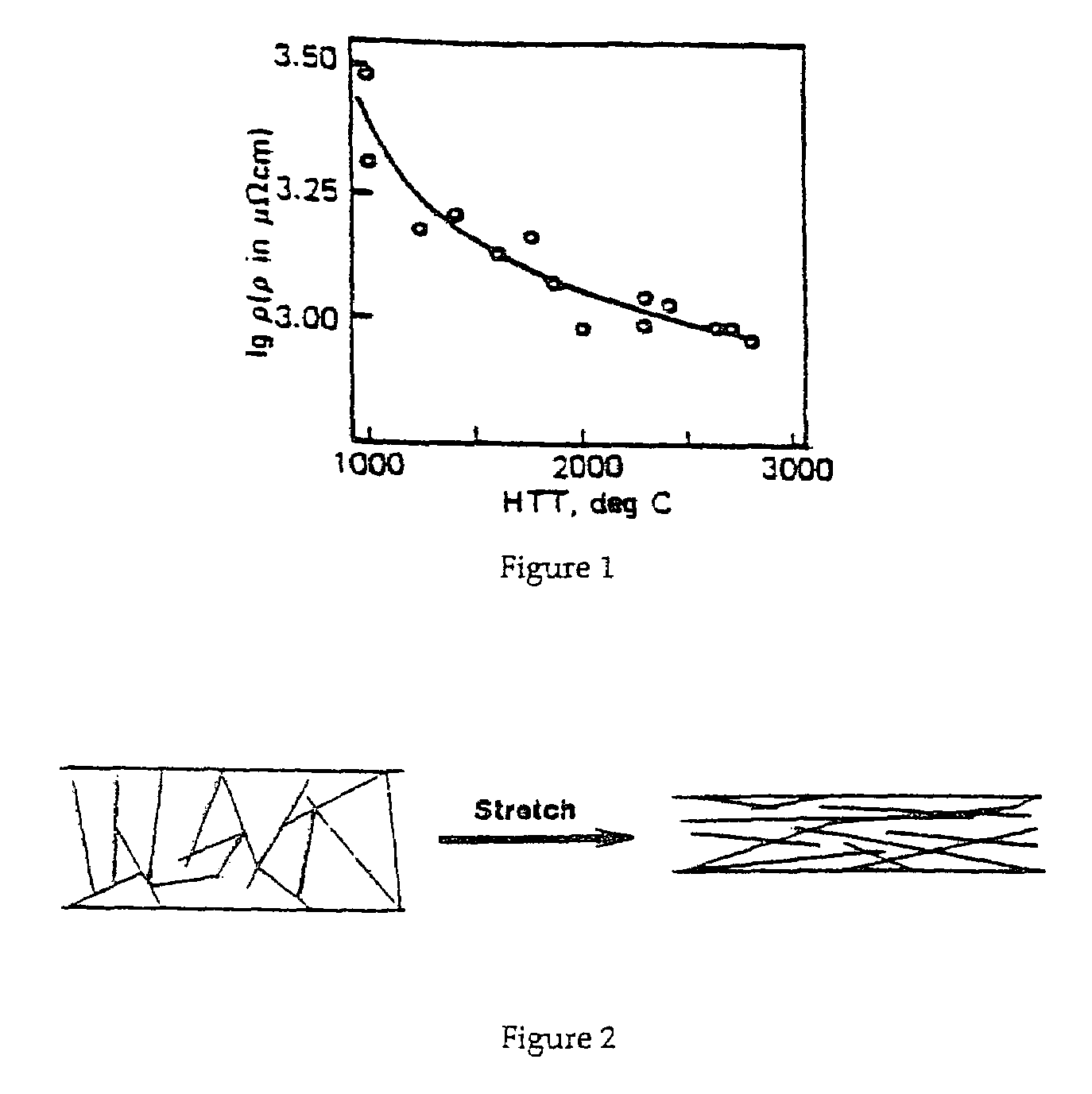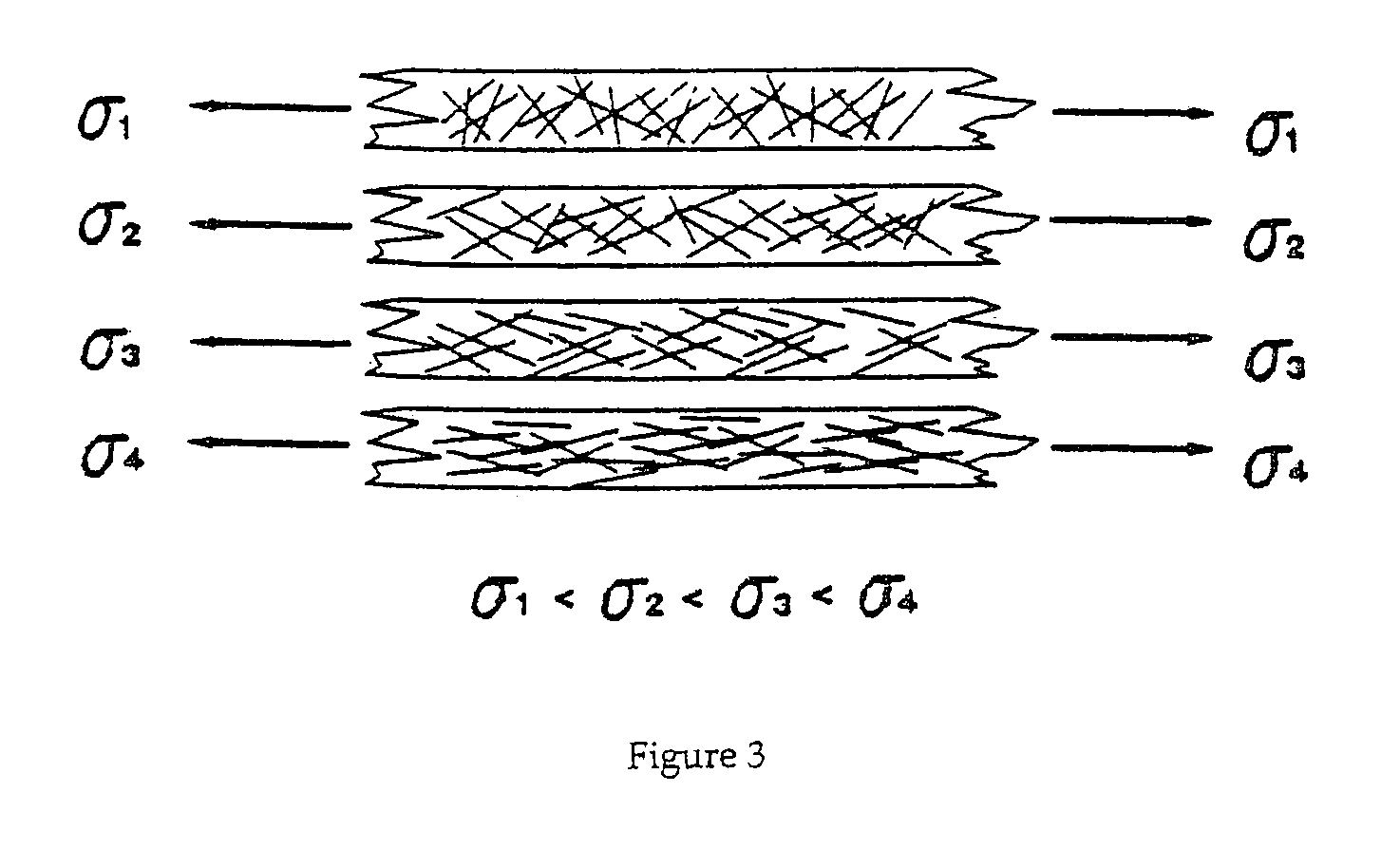Environmentally stable high resistivity carbon fiber and method of producing
a carbon fiber and high-resistance technology, applied in the field of carbon fiber composition and method of making same, can solve the problems of high cost, manual process of arranging plies, and difficult work with carbon fibers, and achieve the effects of reducing the amount of carbon fiber tows, and controlling electrical resistance levels
- Summary
- Abstract
- Description
- Claims
- Application Information
AI Technical Summary
Benefits of technology
Problems solved by technology
Method used
Image
Examples
Embodiment Construction
[0024]A typical composite filament construction to which the invention can be applied is illustrated, by means of example, in FIG. 2. As shown, a segment 10 of PAN filaments includes a plurality of carbon PAN molecules 12 disposed in various orientations within filament 10. While it is realized that tows are each comprised of a large number of filaments, such as 1,000 or more, the carbon fibers are generally referred to in their collective construction sense, or tows. As used herein, the term carbon fiber includes precursors from which carbon fibers are produced, such as PAN, rayon and pitch. The orientation of the carbon filaments is expressed in terms of a basal plane that is defined as the plane which is perpendicular to the principal axis in a tow construction. The basal plane is shown in FIG. 5 as a series of horizontal parallel lines, and is also shown perpendicular to axis “c” in a schematic appearing immediately adjacent the basal planes showing axes “a” and “c”, wherein axi...
PUM
| Property | Measurement | Unit |
|---|---|---|
| alignment angle | aaaaa | aaaaa |
| temperatures | aaaaa | aaaaa |
| temperatures | aaaaa | aaaaa |
Abstract
Description
Claims
Application Information
 Login to View More
Login to View More - R&D
- Intellectual Property
- Life Sciences
- Materials
- Tech Scout
- Unparalleled Data Quality
- Higher Quality Content
- 60% Fewer Hallucinations
Browse by: Latest US Patents, China's latest patents, Technical Efficacy Thesaurus, Application Domain, Technology Topic, Popular Technical Reports.
© 2025 PatSnap. All rights reserved.Legal|Privacy policy|Modern Slavery Act Transparency Statement|Sitemap|About US| Contact US: help@patsnap.com



